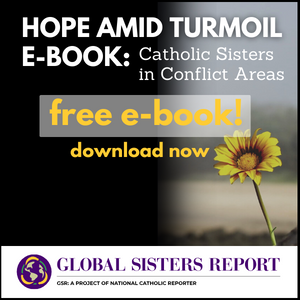When considering the Catholic Church, perhaps nothing stands out so obviously as the Mass.
Eucharist, according to the Second Vatican Council, is both the “source and summit” of Christian life. Using bread and wine, at Mass we celebrate a communal sharing of the true presence of the risen Christ in these elements, which change from bread and wine into this sacrament of Christ. This is known as transubstantiation, a theological term used by Latin (Western) Christians, and it is a central belief of the Roman Catholic Church. So why does the creed make no mention of it?
The creedal formula we normally profess on Sunday is known to theologians as the Nicene-Constantinopolitan Creed, because it is derived from two fourth-century councils. The greater part of this statement of faith is dedicated to the trinitarian nature of God because this was the raging debate of the day.
At this time the eucharistic presence of Christ was not a source of contention. Several centuries were needed before the church would ask whether this presence could be seen with the eyes in our head or only with the eyes of faith.
Although belief in Christ’s presence was an ancient doctrine, the particular terminology of transubstantiation had not yet been created. Early creedal debates took place in Greek and were centered mostly in the East while the later debates over the Eucharist occurred in Latin and took place in the West.
It was not until the Fourth Lateran Council in 1215 that the Roman church adopted “transubstantiation.” Even still, Eastern Christians do not use the term (though they share in belief that the eucharistic elements change to become the sacrament of Christ’s body and blood during the Mass). Transubstantiation was re-emphasized by the Council of Trent in the 16th century, but the council said it was doing so without prejudice to the theology of the East. Likewise, since both Eastern and Western Christians have the creed in common, to unilaterally change it to include transubstantiation would threaten an important bond between the two.
As with all human language, there are limits to how well the word describes the transcendent reality to which it refers. For example, the term substance suggests something physical, leading to the regrettable idea that bread and wine are changed into the physical body and blood of Christ. This is a misrepresentation. Real is not the same as physical.
In his book on the Eucharist Pope Benedict XVI reminds us that there is more to reality than the physical. “What has always mattered to the church,” he insists, “is that a real transformation takes place. . . . There is something new there that was not before.”
This article appeared in the August 2011 issue of U.S. Catholic (Vol. 76., No. 8, page 46).
Image: iStock/Sryczka














Add comment